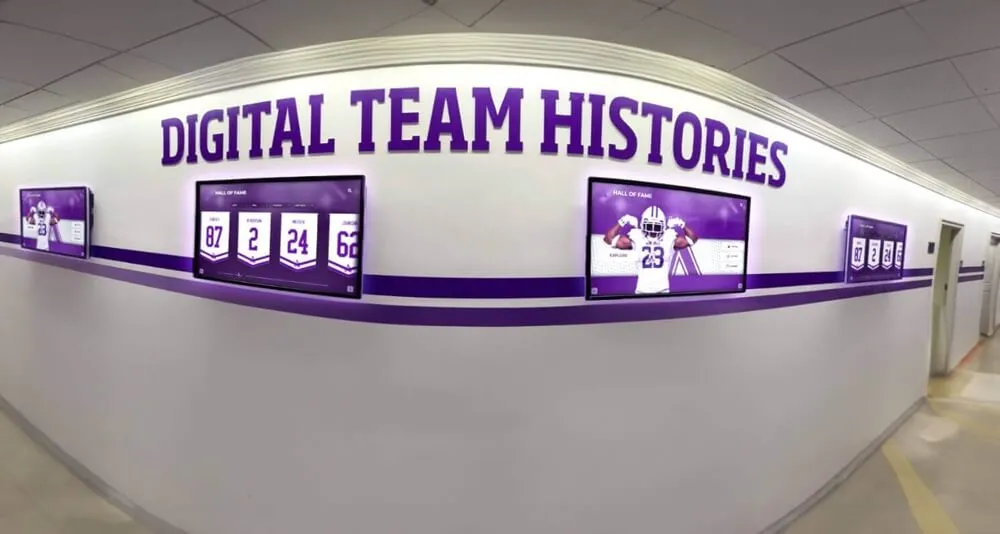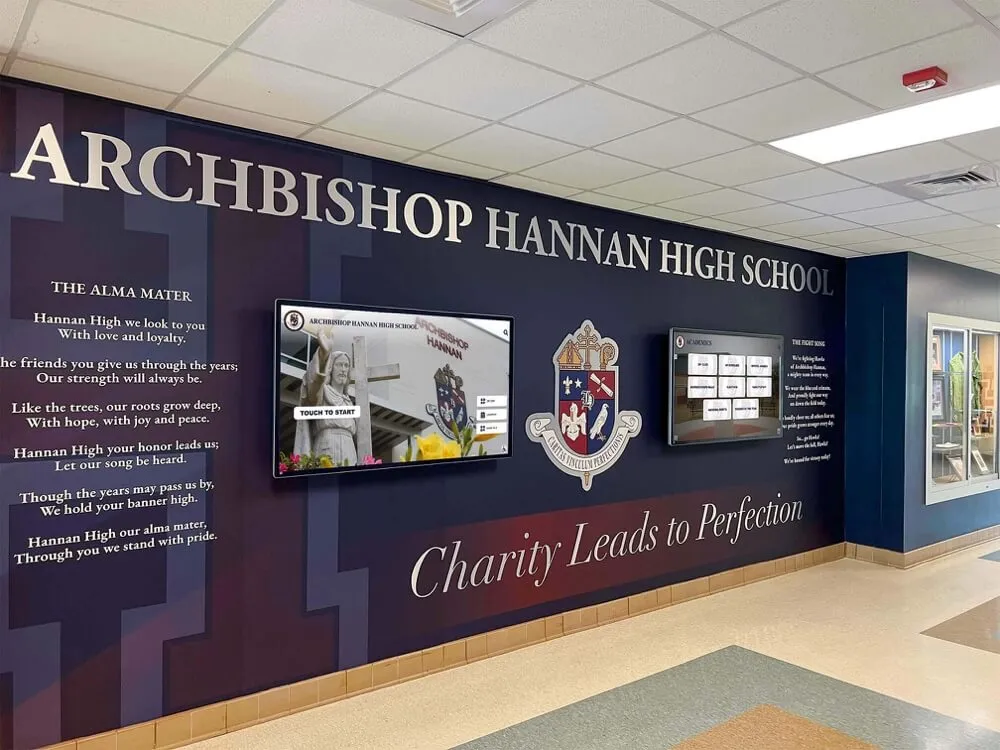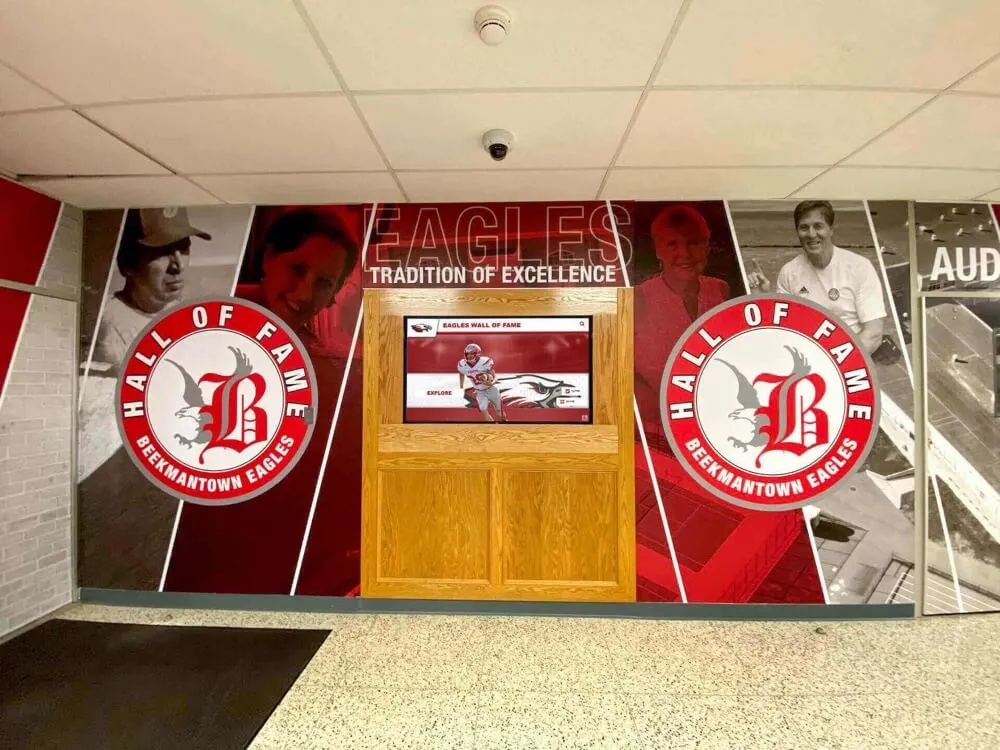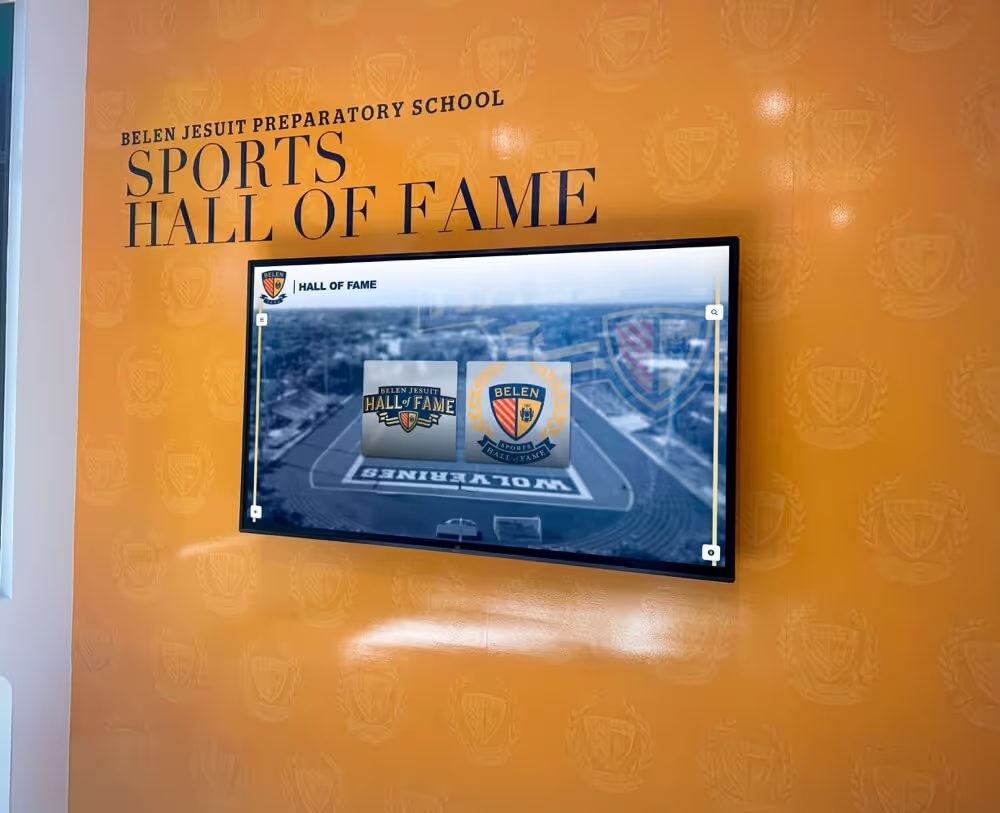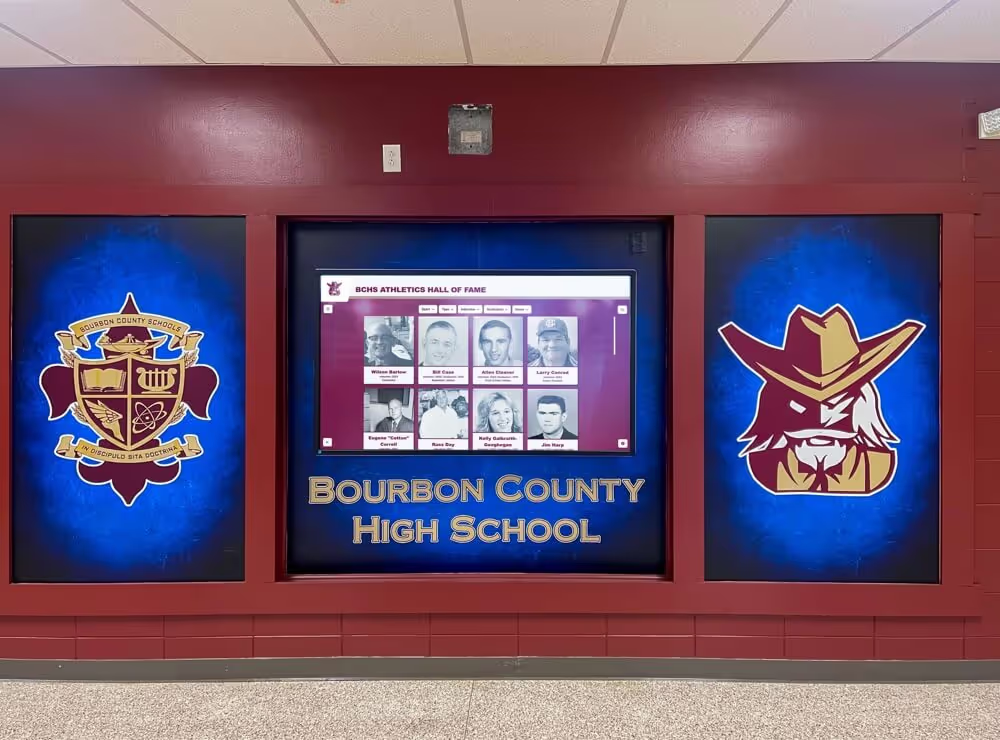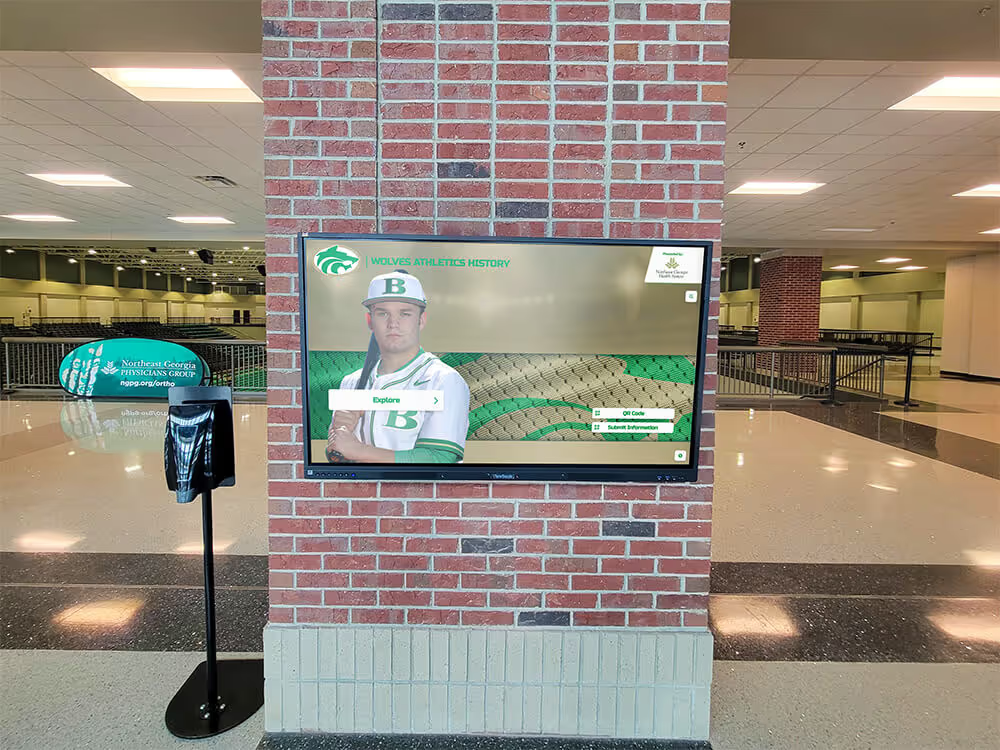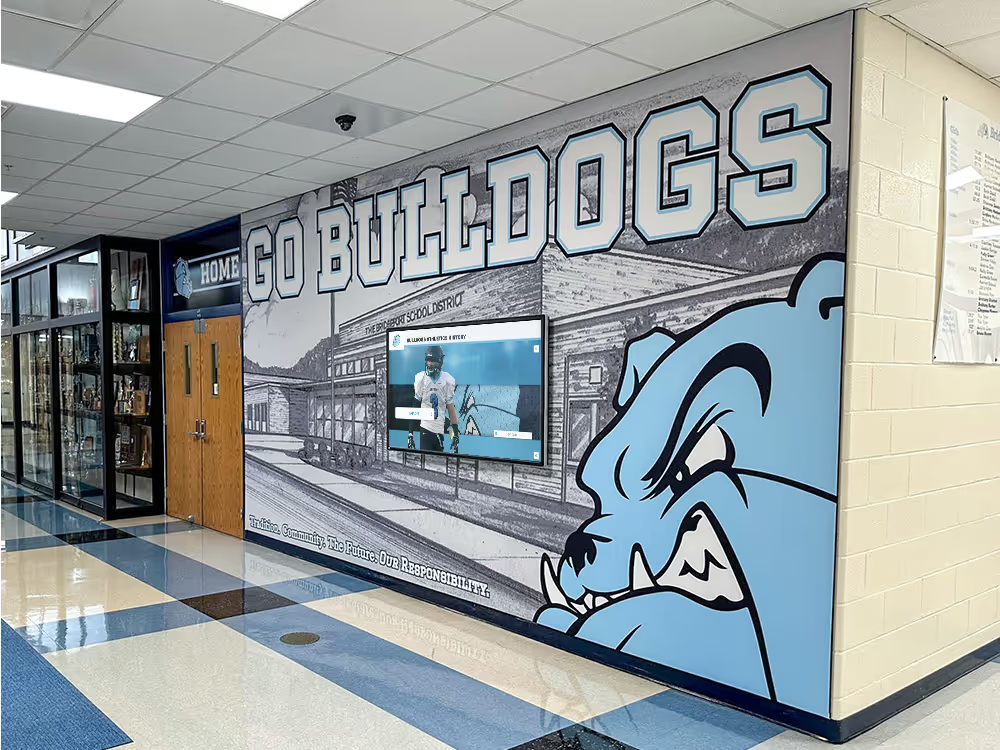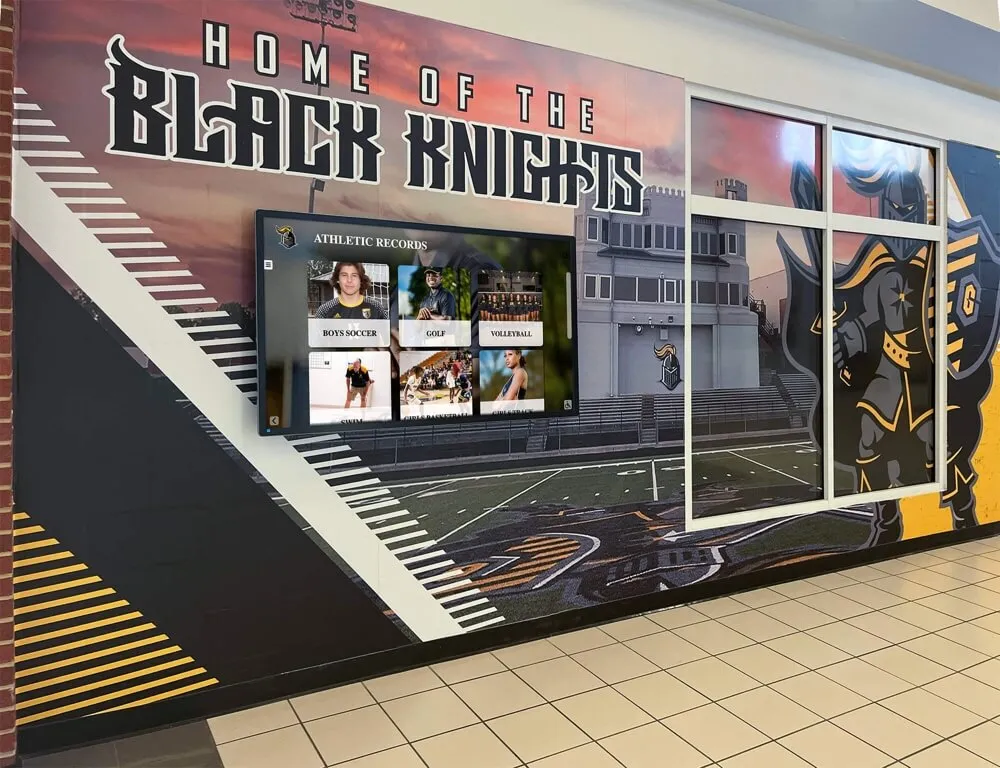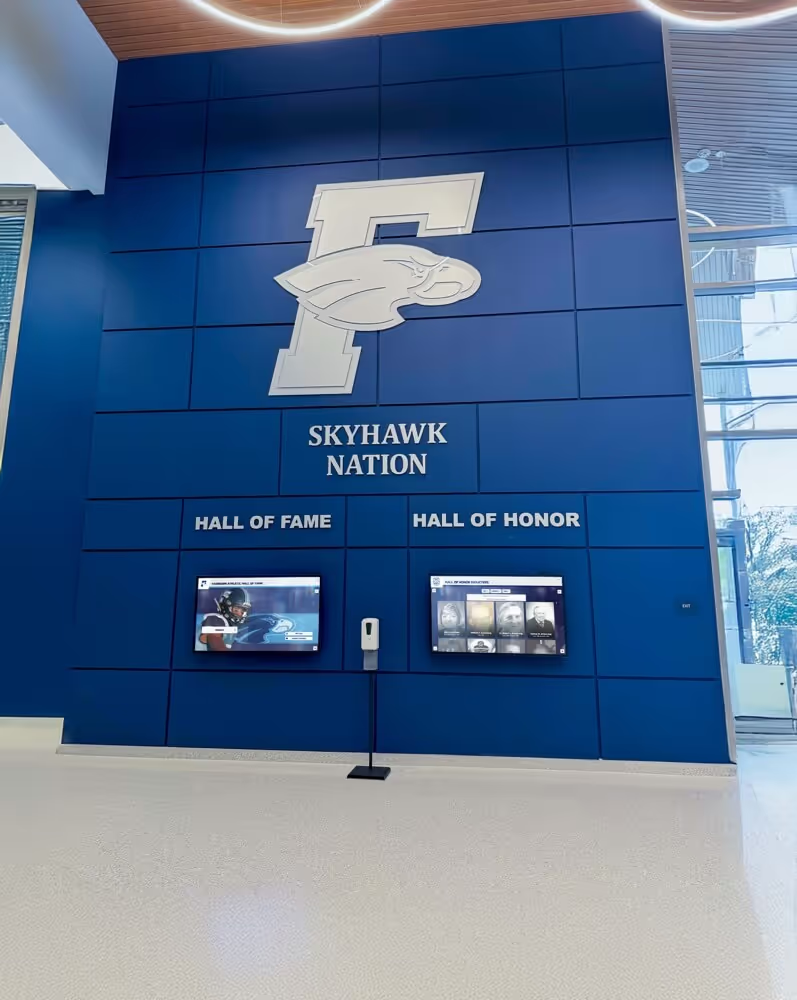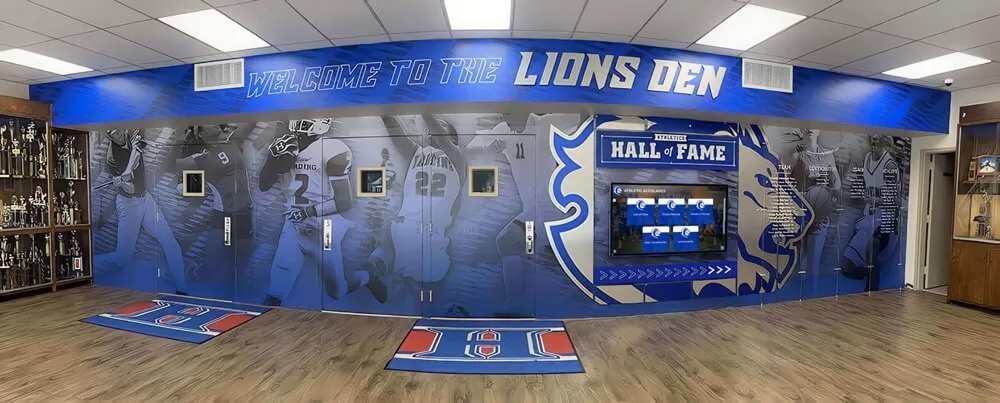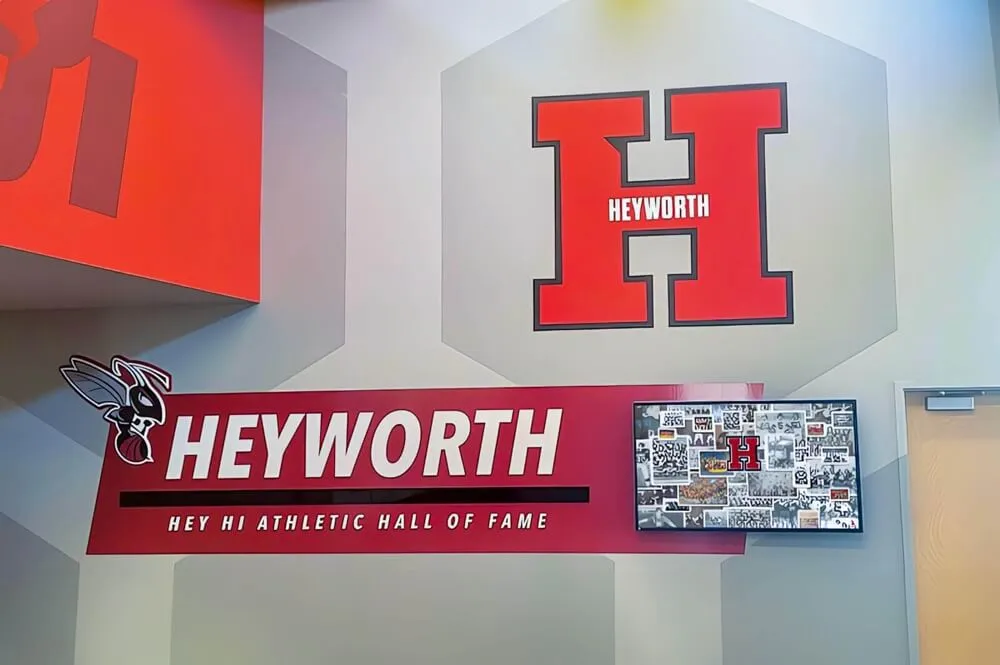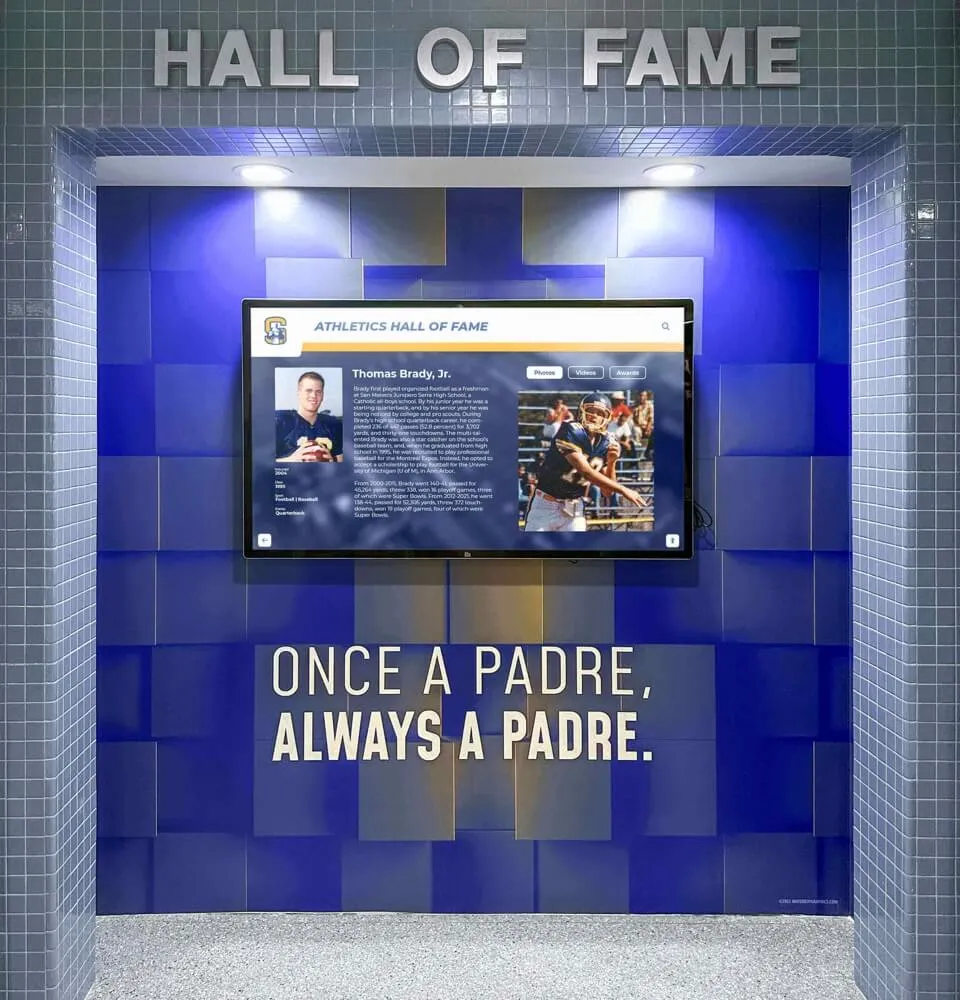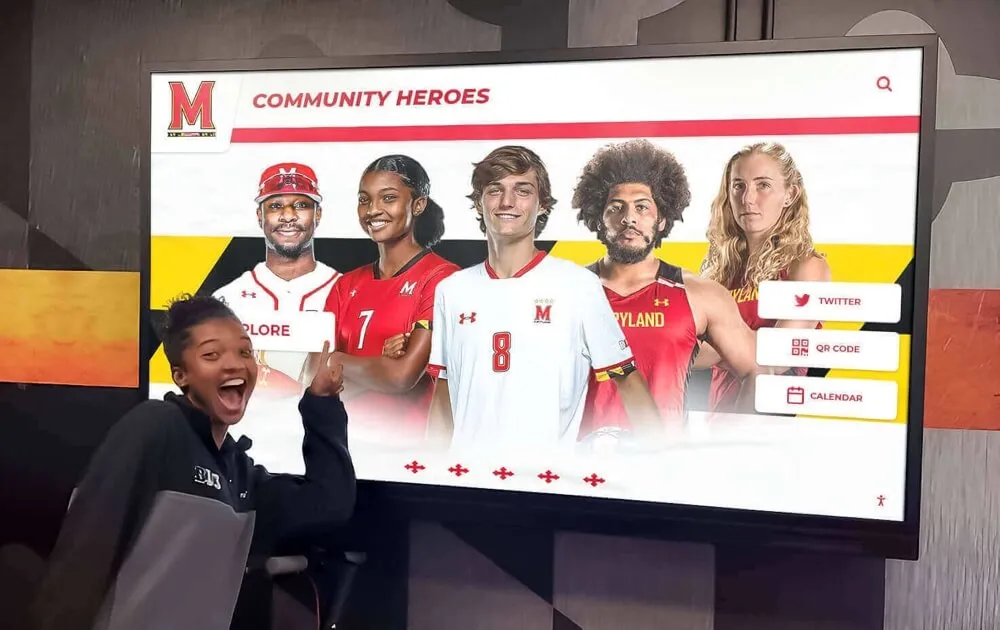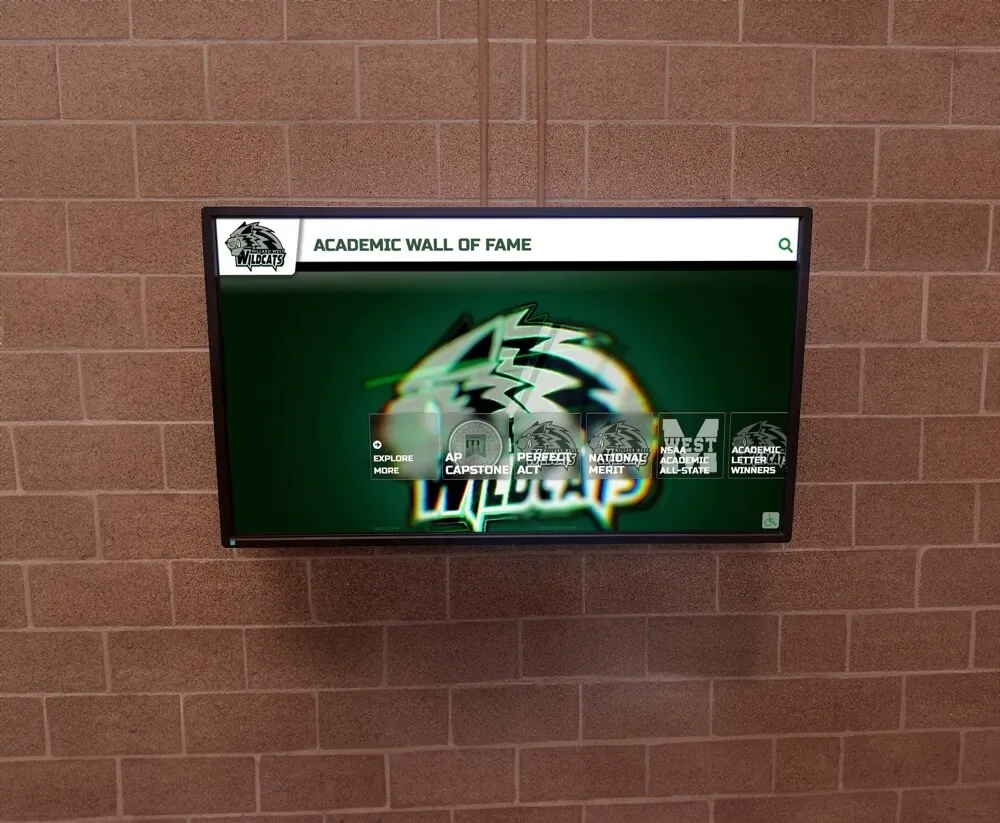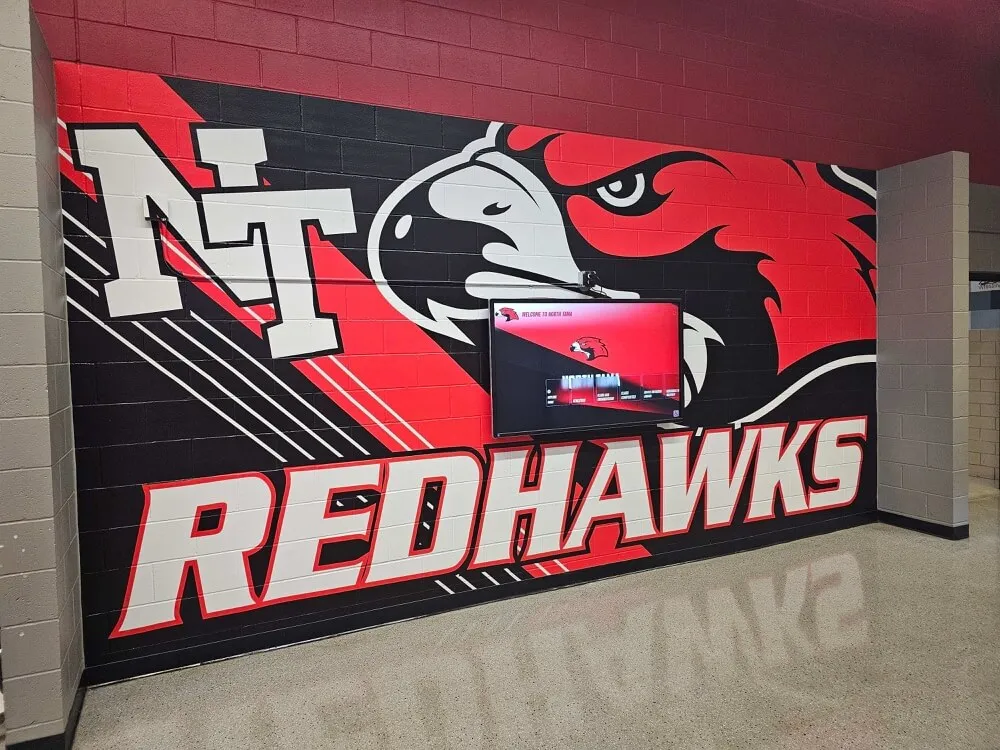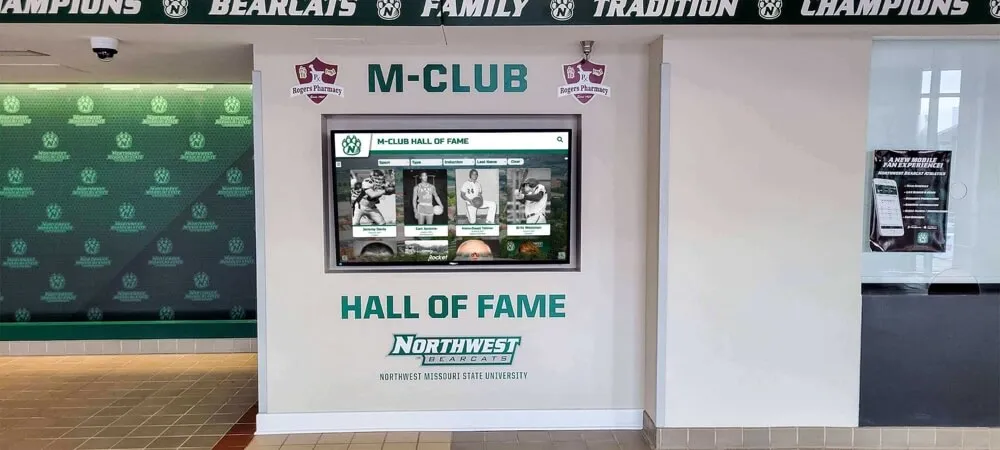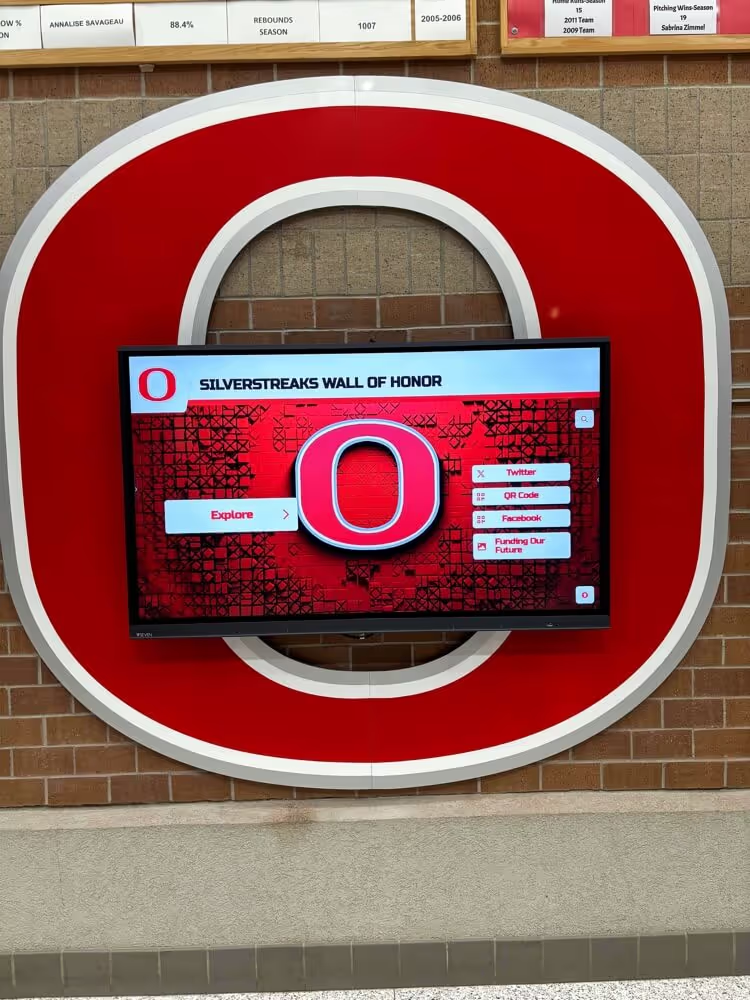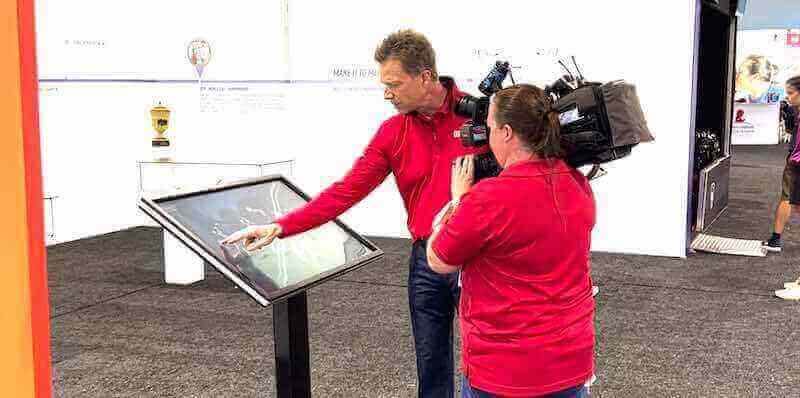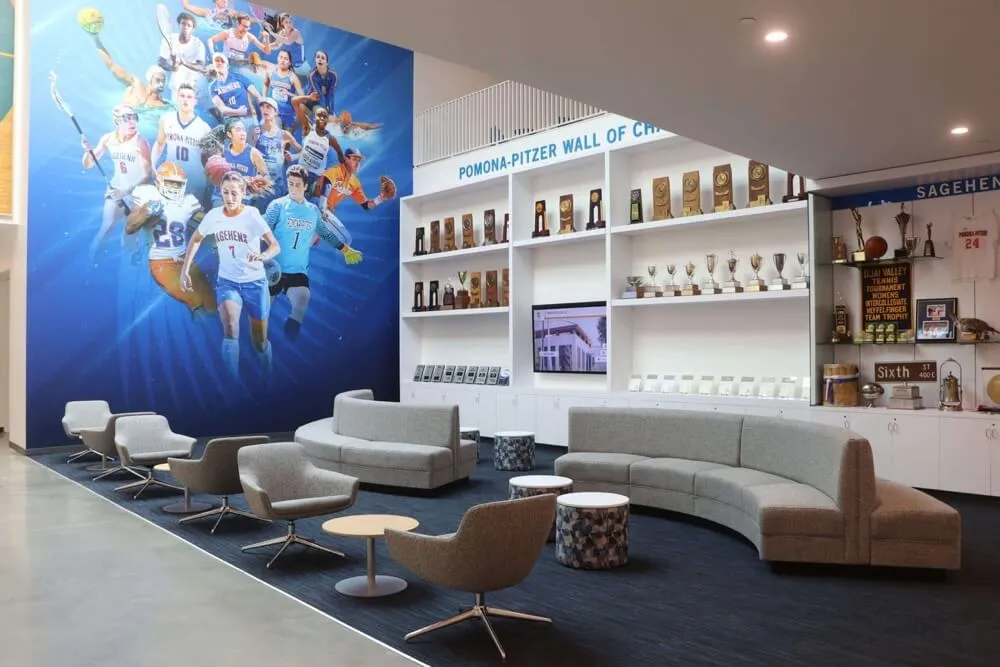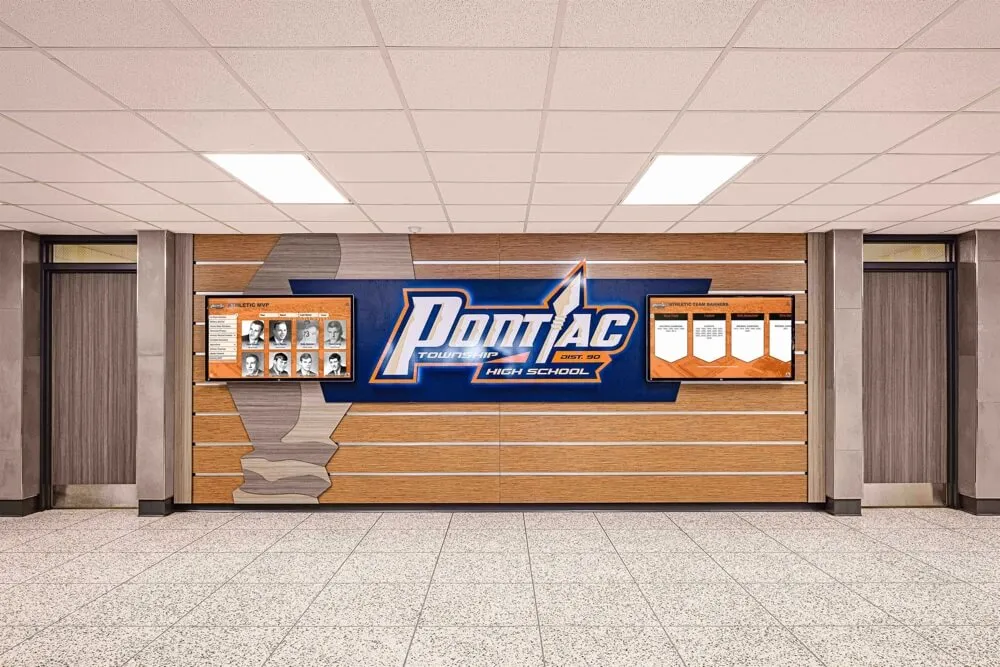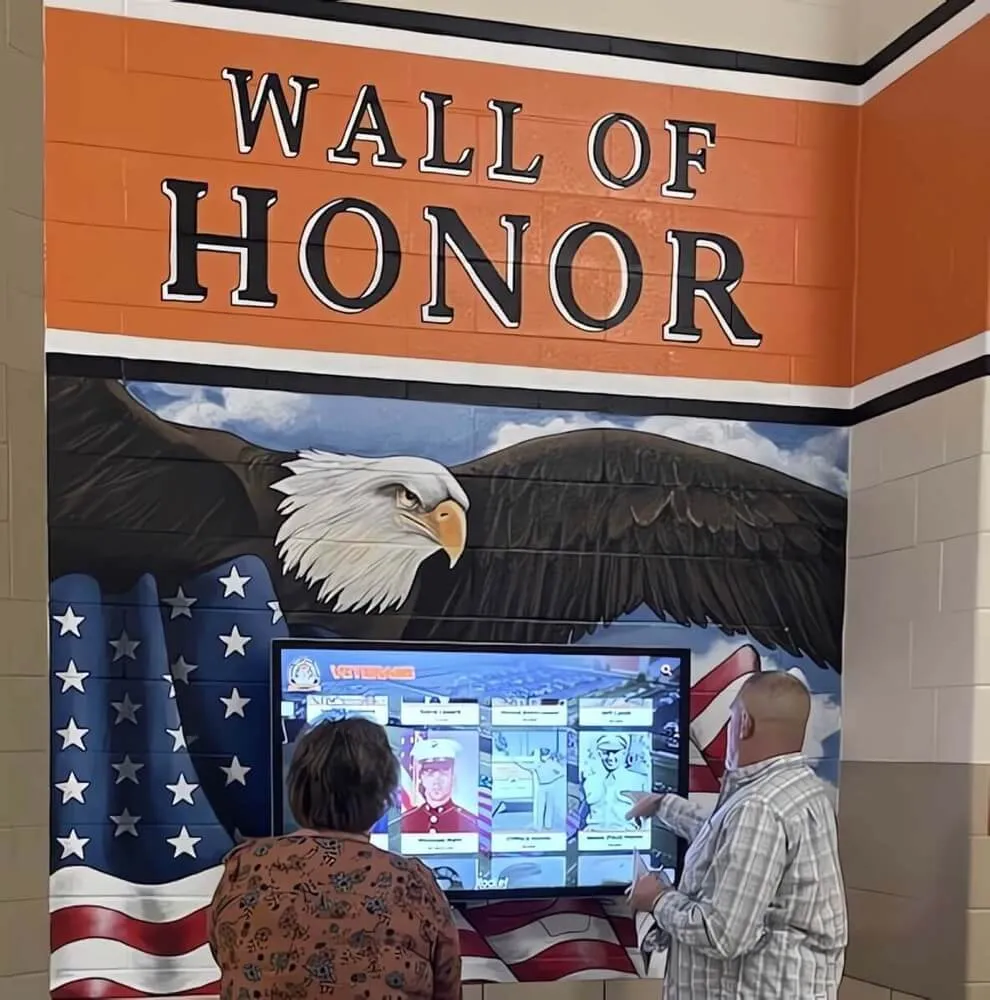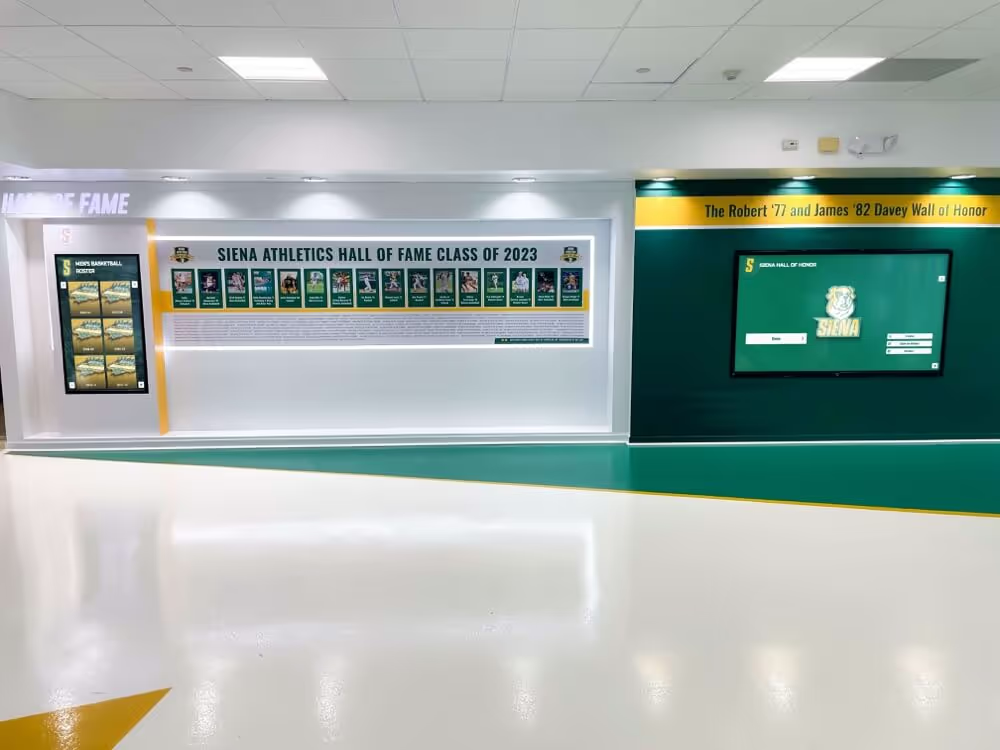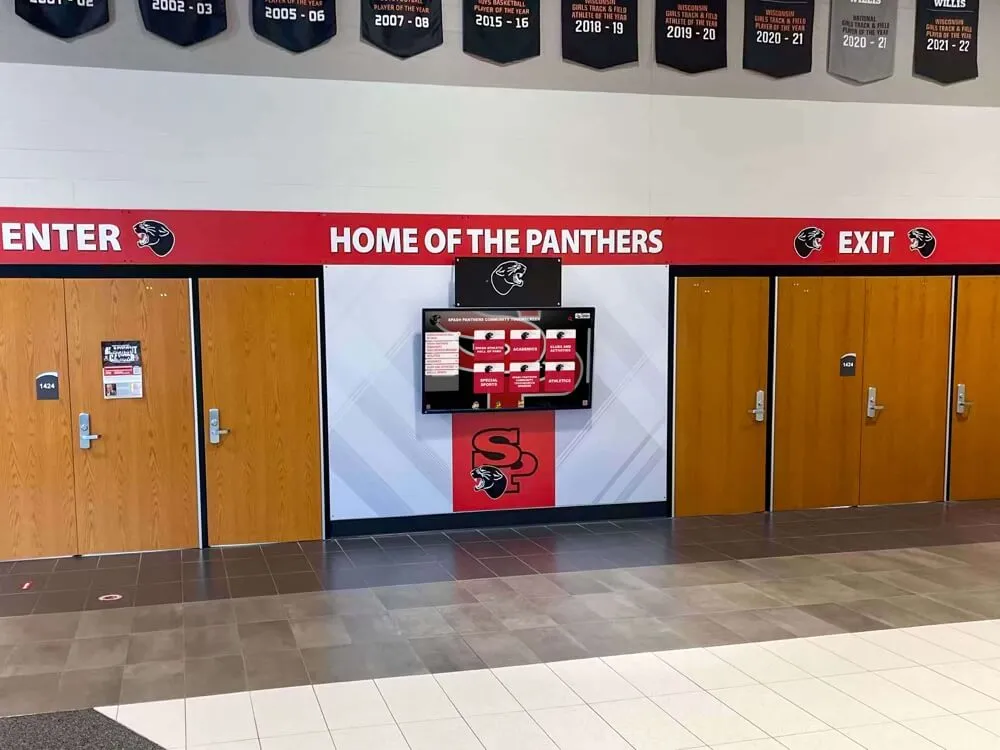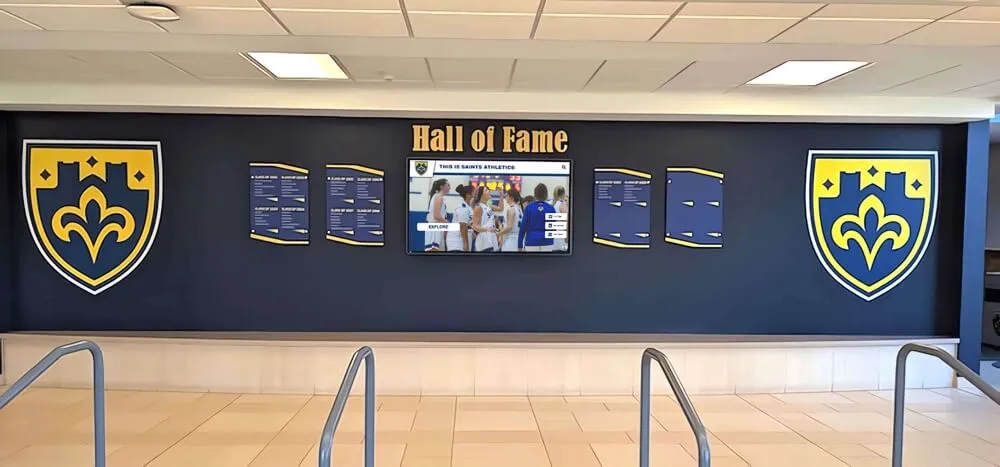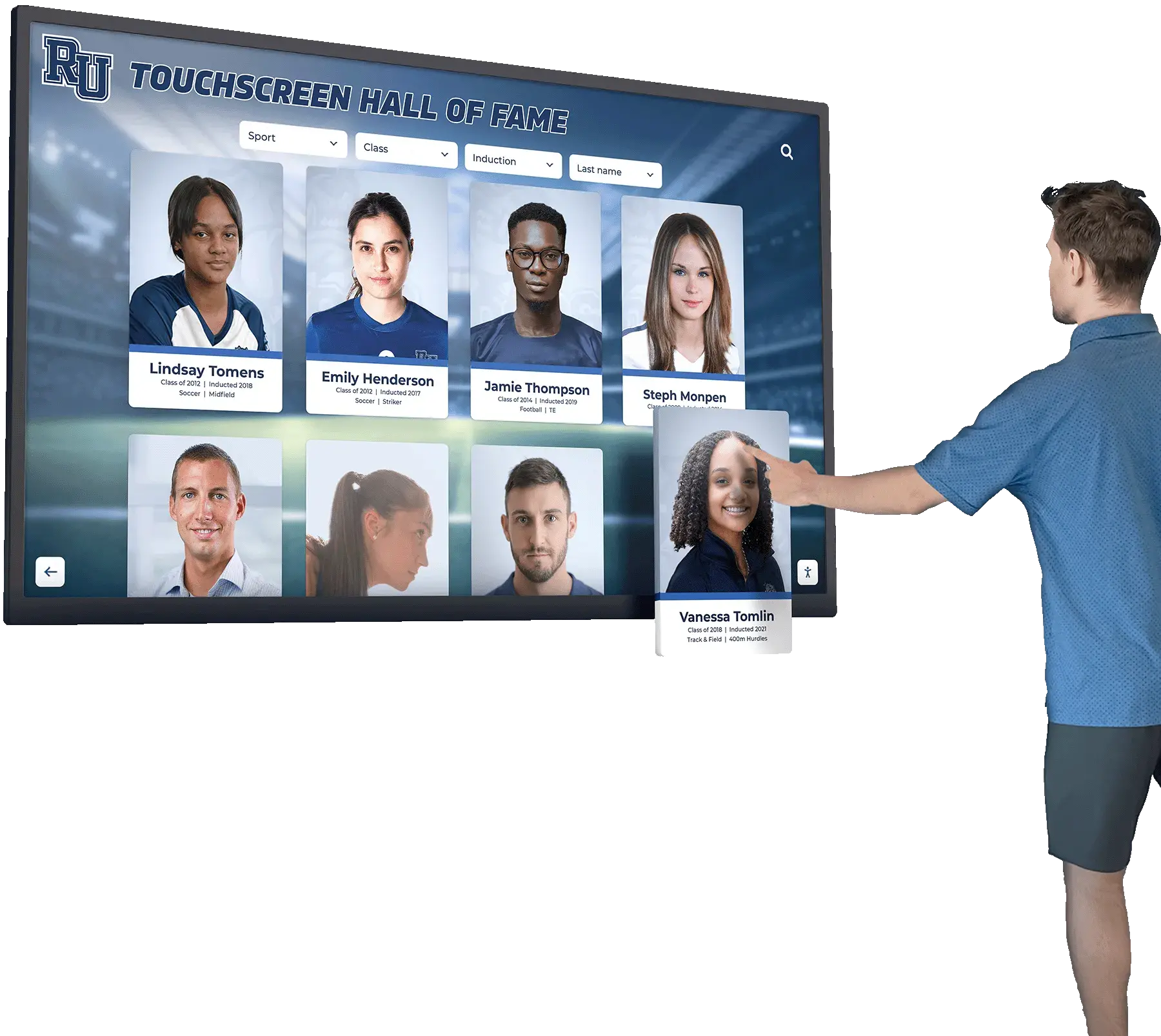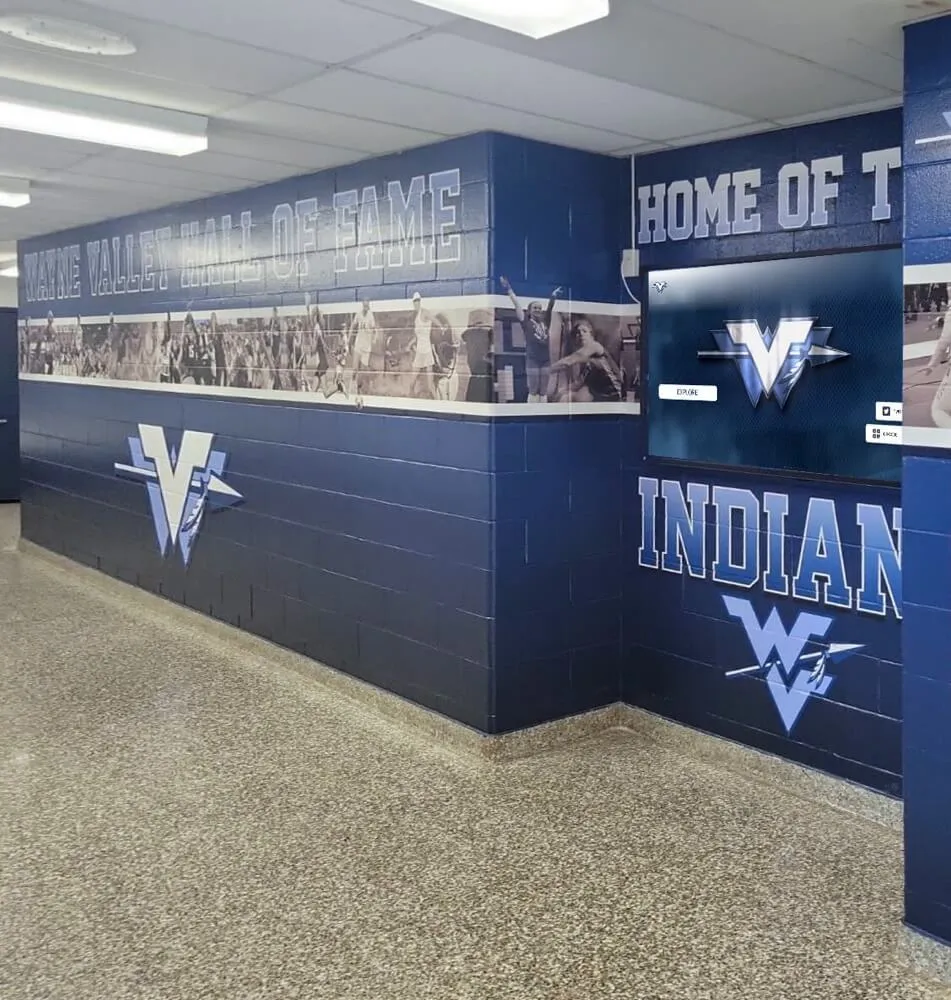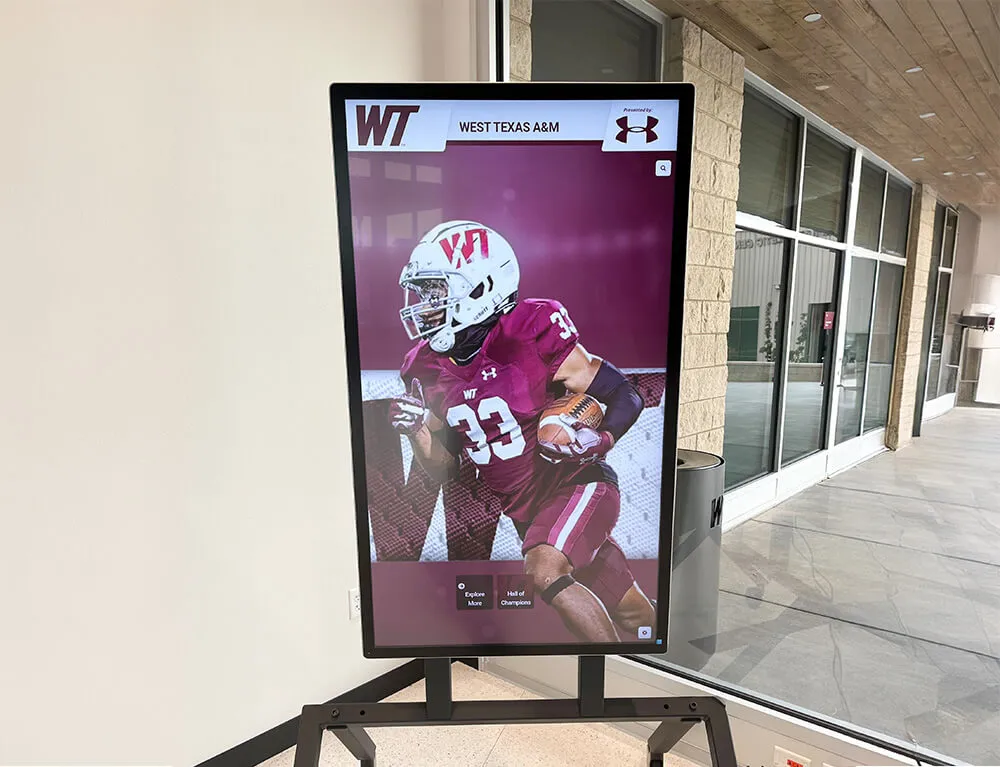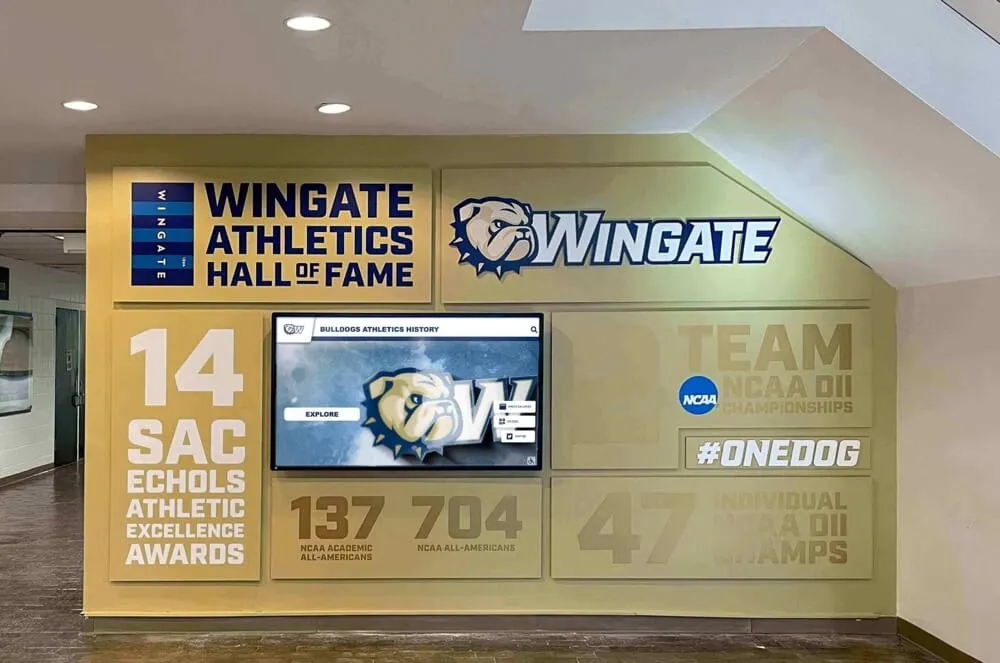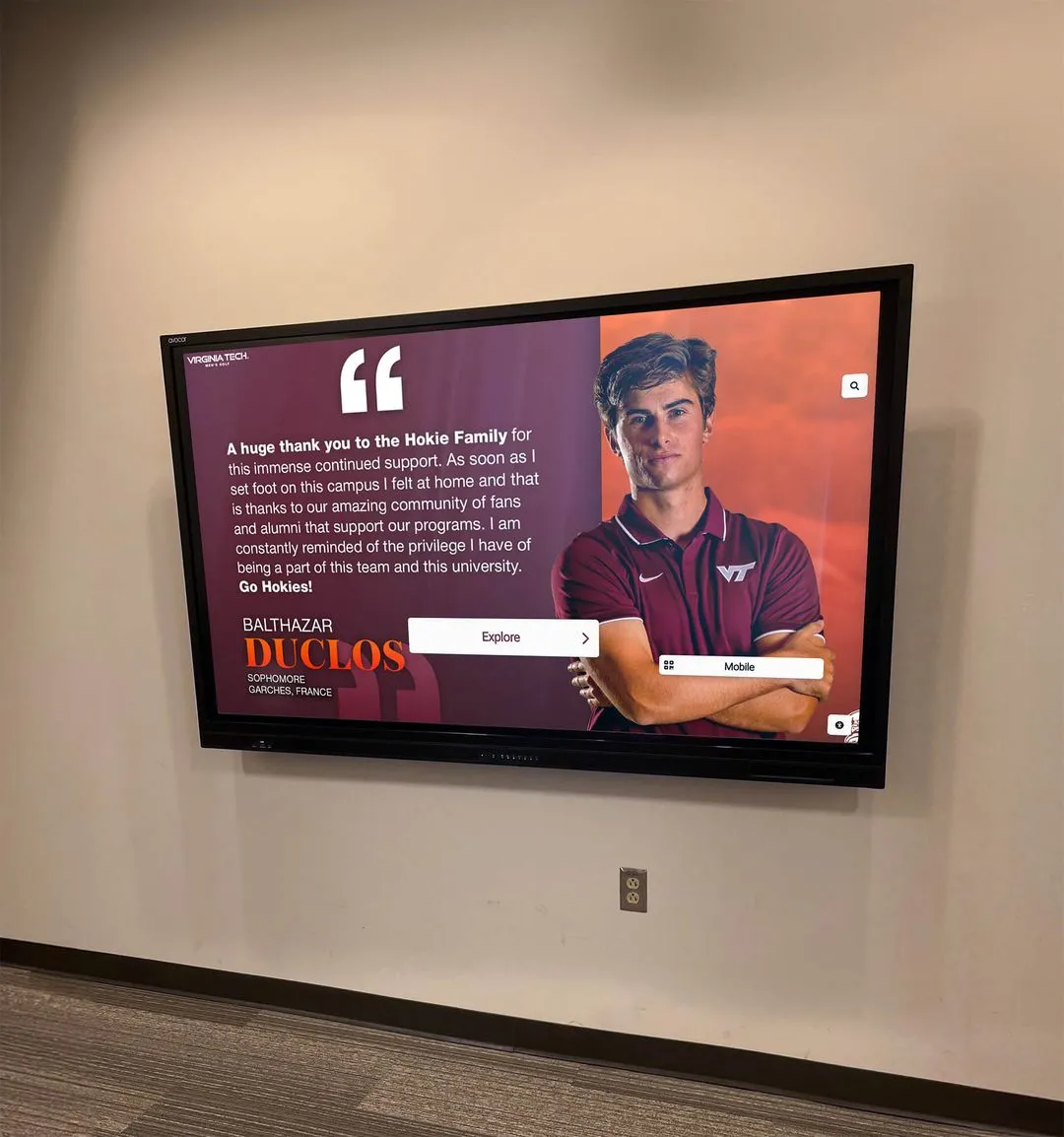
Why Technical Planning Matters
Launching a digital halls of fame (sometimes called a touchscreen hall of fame or interactive alumni display) is more than hanging a commercial screen on the wall: it is an integrated hardware, software, and security ecosystem that must run reliably for years. This guide breaks down each technical layer so your team can deliver a seamless visitor experience while minimizing long-term maintenance.
1. Display Hardware Essentials
Your choice of panels, touch layer, and mounting solution determines viewing quality and overall durability. Below is a quick-scan card view of the most popular options.
Commercial LCD / LED
- Budget-friendly
- High brightness⇢ foyers & gyms
- 3–5 yr. manufacturer warranty
OLED Panels
- Unmatched color & contrast
- Ultra-wide viewing angles
- Higher cost, potential burn-in
Interactive Kiosks
- ADA-compliant heights
- Lockable service doors
- Custom vinyl branding
Video Wall Arrays
- Seamless 138"+ canvases
- Redundant power supplies
- Best for arenas & lobbies
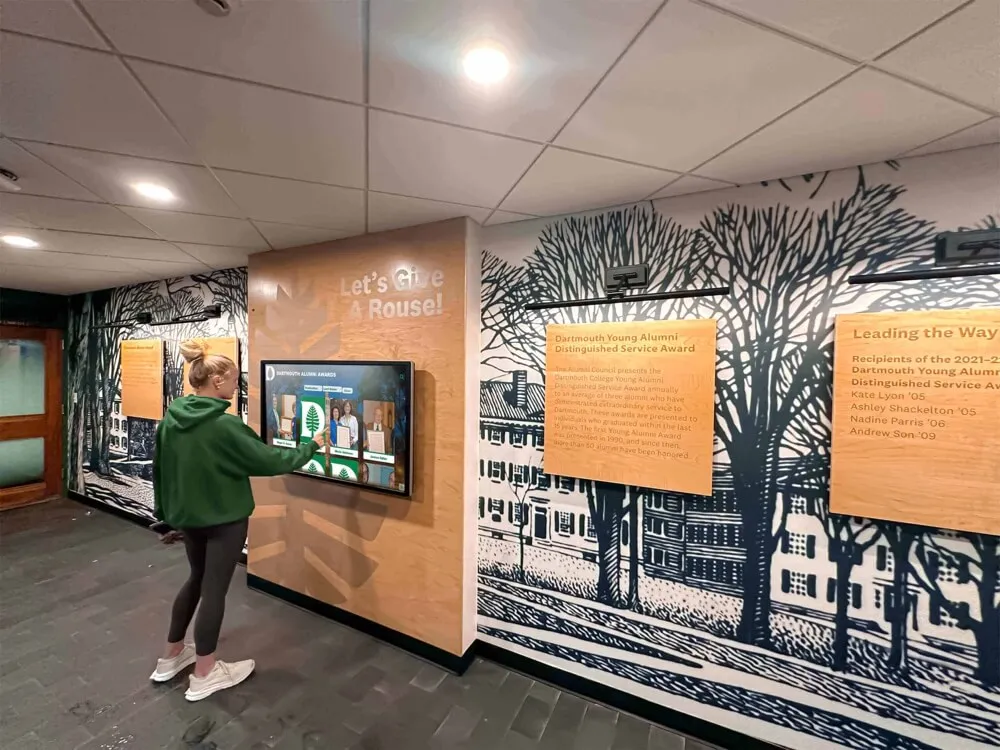
Touch Technology Deep-Dive
We recommend projected-capacitive (PCAP) for most installations—think smartphone-level responsiveness on a 55"–86" screen. Infrared frames work well for large video walls, while optical bonding improves durability in high-traffic athletic facilities.
Need an outdoor enclosure? Check out our weather-sealed kiosk line.
2. Rock-Solid Software Architecture
Behind every eye-catching **interactive alumni display** sits a scalable tech stack that keeps content fresh and downtime near zero.
Content Management System (CMS)
- Cloud-based edits from any browser
- Role-based approvals
- Open REST API for roster sync
Local Player & Caching
- Plays offline up to 30 days
- H.265 video decoding
- Automated nightly sync window
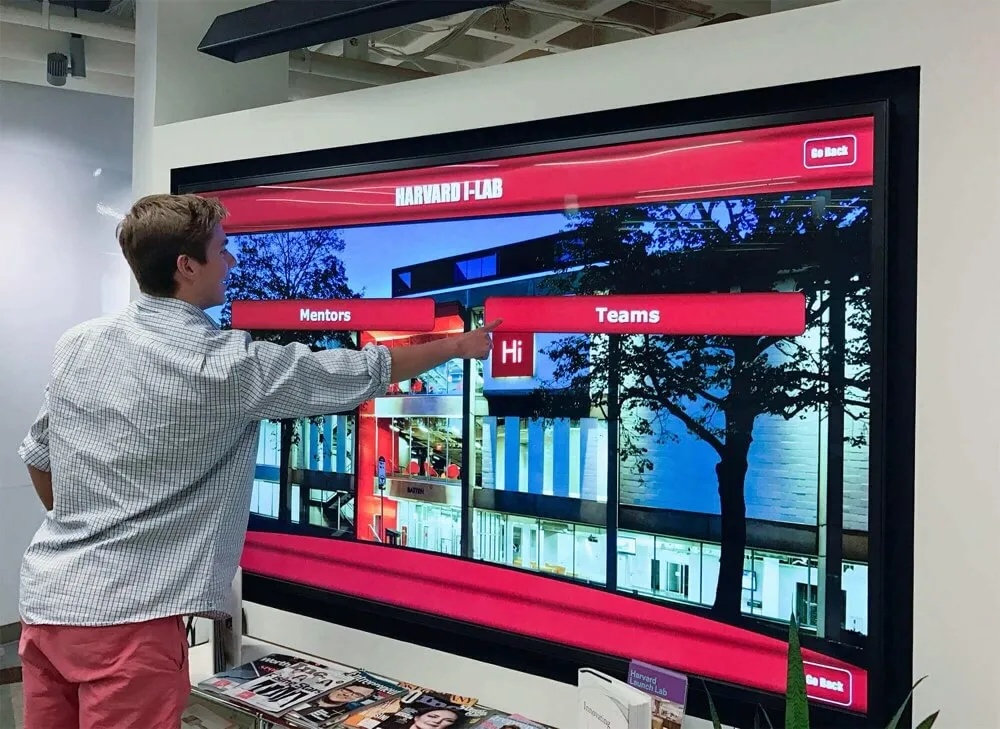
3. Connectivity & Security Checklist
A mission-critical digital donor recognition wall deserves the same defense-in-depth as any student information system.
- VLAN Isolation: keep media players off academic networks.
- 802.1X Authentication: prevents rogue devices.
- Automatic OS Patching: schedule during 2 AM maintenance window.
- Endpoint Encryption: protects any cached alumni data.
- Pen-Test Annually: validate API and physical ports.
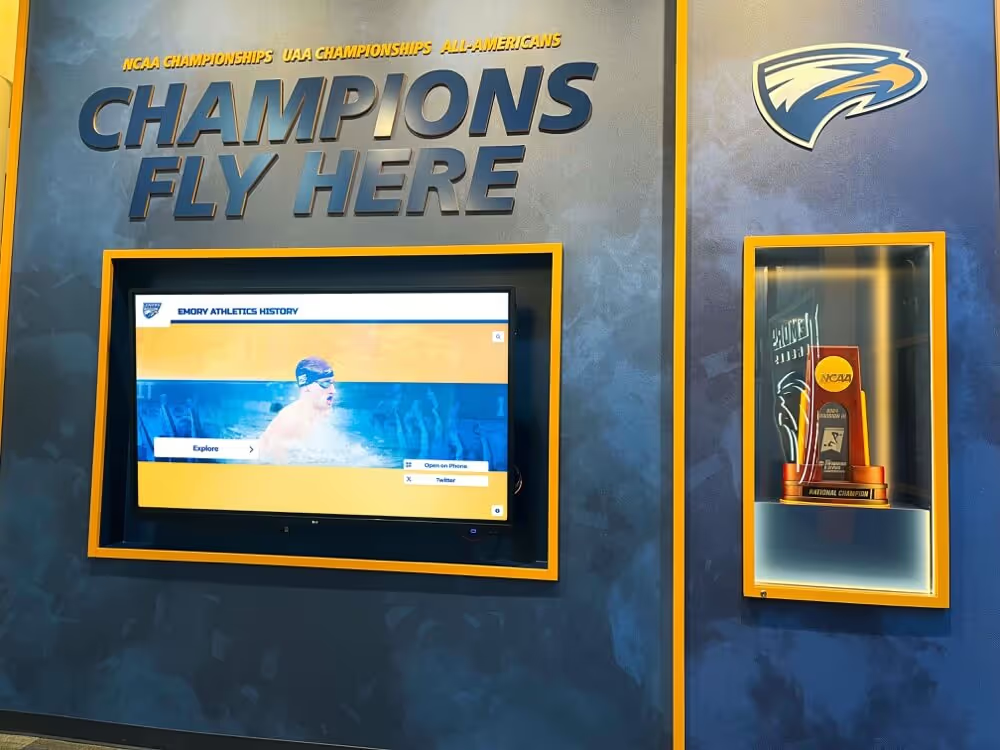
4. Implementation Timeline
Typical projects span 3–15 weeks. Use the expandable timeline below to understand each milestone.
Discovery (1–2 weeks)
Stakeholder interviews, site surveys, and content audits set the foundation.
Design (1–5 weeks)
Hardware spec, UI wireframes, and data model finalized.
Development (1–5 weeks)
CMS customization, API integrations, and stress testing.
Deployment (1–5 weeks)
On-site installation, content import, and go-live rehearsal.
Additional Resources
- 👉 Read our ROI guide for digital donor walls
- 👉 Compare solutions in our interactive demo hall
- 👉 Explore installation galleries on HallOfFameWall.com
Ready to Future-Proof Your Recognition Display?
Schedule a live demonstration to see how Rocket Alumni Solutions can transform your campus.
Request Your Demo TodayKey Takeaways
- Choose commercial-grade hardware with PCAP touch for longevity.
- Adopt a cloud-based CMS with offline playback safety nets.
- Enforce network segmentation and scheduled patching.
- Follow a phased rollout to hit every milestone on time.
For a deeper dive into pricing or ADA compliance, reach out to our engineering team—or explore live examples at touchwall.us.





